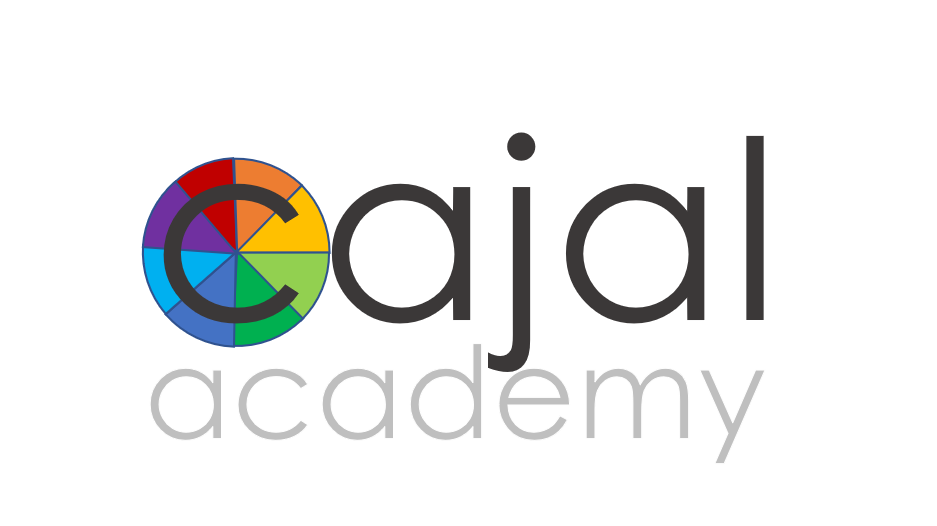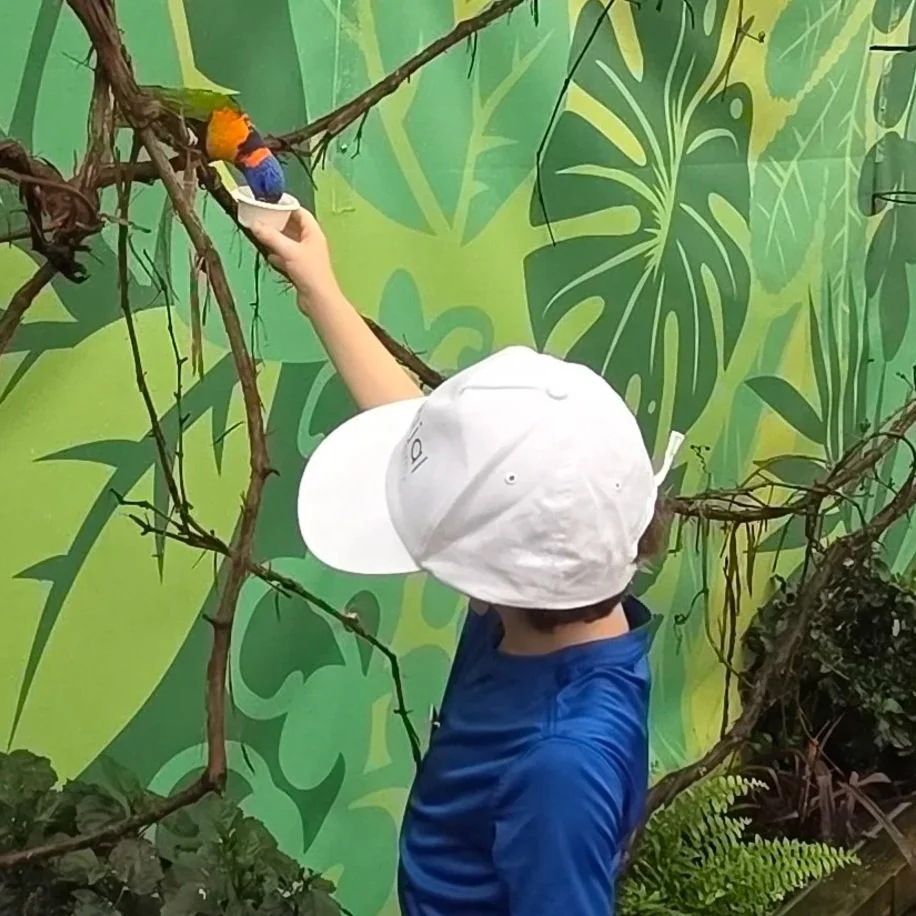Groundbreaking, OT-designed educational program for kids with dyspraxia and dysgraphia
“I used to think that it was impossible to overcome dyspraxia. Now I see that perhaps I was wrong, because I can already feel that it’s happening.”
Cajal Academy is proud to announce a comprehensive, groundbreaking approach to addressing dyspraxia—not just accommodate its impact on a child’s life
Find out more about our Catalyst Method and how we use it to reduce dyspraxia, dysgraphia & other motor coordination difficulties
Dyspraxia, dysgraphia and other motor planning and coordination challenges can greatly impact a child’s academic development. Writing a story, taking notes on a lecture, showing your work in math class, creating a painting in art—all these common academic tasks require that you simultaneously access the higher order thinking skills where our students excel and engage in a task requiring that you plan and coordinate your motor output.
For students with motor coordination disorders, these tasks offer obstacles not experienced by their typically-developing peers. Inefficiencies in how they plan and execute motor activities turn “simple” tasks like writing into resource hogs in the brain, detracting key resources they need to engage in the analytical and creative processes where they excel. This in turn can lead objectively brilliant students to feel like they are “stupid,” as the brain goes blank when they attempt simple processes that would not task them if done with no motor component.
Far too many schools respond to these difficulties with accommodations like “talk to text” but without addressing the underlying neurological deficits, leaving the child to struggle across a range of settings and tasks while undermining confidence and academic and eventual professional access.
We take a meaningfully different approach, through our exclusive, neurodevelopmental process for reducing the level of difficulty, through a neurodevelopmental approach, while differentiating their academic and social-emotional learning to empower them to access and enjoy their intellectual gifts, and develop an empowered personal identity based in a scientific understanding of their challenges and how they can improve upon them. This starts with a data-driven process for identifying and then enhancing the specific neurocognitive and neurophysio skills driving their motor difficulties, as part of a data-driven, “full court press” addressing the needs of the whole child utilizing our unique Catalyst Method.
Read these case studies to learn how we transform learning and social-emotional profiles for students with dyspraxia, dysgraphia and other motor coordination difficulties
Comprehensive programs rebuilding students’ motor coordination profiles and unwinding the social-emotional and academic experiences that they generate
Across the many exceptionally bright students with motor coordination difficulties with whom we’ve worked, we have seen common ‘through-lines’ in their academic development but also their social-emotional experiences. Our individualized Student Growth Catalysts apply research-backed interventions rewiring the fundamental skills on which the more sophisticated motor planning required for reading and writing rely and, critically, contextualize that work within a comprehensive program addressing the needs of the whole child.
Here are some of the components that go into for students having dyspraxia, dysgraphia and other motor coordination challenges:
We use our ground-breaking, Neuroplasticity Interventions Process to increase the brain’s ability to coordinate motor skills.
Addressing dyspraxia requires more than mere repetition to build up their ability to not only learn but retain a new skill. We apply our Neuroplasticity Interventions Process to identify and systematically improve very granular-level neurocognitive skills that increase the brain’s capacity to break down, sequence, retain, recall and execute on motor plans. This includes instruction by our licensed occupational therapist breaking tasks down into discrete skills—from typing and handwriting to the eye coordination required to do visual tracking when reading a story. This is supported by physical therapy interventions to strengthen core postural muscles and to integrate primitive retained reflexes, reducing destabilizing influences that further complicate the motor planning process.
We differentiate academic instruction to the unique learning strengths and challenges of children with motor coordination challenges
Our academic instruction for students with dyspraxia is tailored to reduce this interference so they can experience the significant gifts in analytical reasoning and creative thinking that they share with all Cajal Academy students. This includes writing workshops that separate the act of authoring from that of scribing and math classes structured to give kids alternative ways to show their mathematical thinking. Our academic instructors work side-by-side with our licensed OT, PT, psychologist and neuropsychologist, through co-taught classes, in-depth weekly team meetings and a deep investment in ensuring that all teachers working with students who have dyspraxia are cross-trained in understanding their unique needs.
We teach kids the neuroscience behind their motor coordination challenges, and how we work to address them.
We teach kids who have dyspraxia the neuroscience behind motor planning disorders, how and why they make certain learning activities feel more frustrating than others, and how we are using neuroplasticity to address them. This taps into our cohort’s high analytical reasoning skills to give them the scientific understanding they need to predict and forgive their challenges, and fosters an authentic growth mindset by show them scientifically that improvement is possible.
Our OT-designed, Body-Informed Learning integrates fine & gross motor work directly into academic classes while increasing engagement and retention.
Fine and gross motor work is integrated directly into the curriculum, multiplying the amount of therapeutic work towards remediating dyspraxia. Along the way, by pairing motor and sensory inputs with learning activities, students’ engagement and retention are strengthened through an effect referred to in neuropsychological research as “embodied cognition.”
Social skills and trauma-informed support to help students develop a positive identity that has room for their differences.
We create personalized social-emotional programs for each student to help them overcome the challenges and poor self-beliefs that may have developed along their journey, including hypervigilance to failure, social anxieties and more. This starts with understanding the several components that may be influencing a child’s social experiences and then bringing together components including social cognition curriculum, counseling with our PhD-level psychologist and coaching to improve self-regulation, within the context of our school-wide, Neuro- and Trauma-Informed Approach.
An expert, multi-disciplinary team led by a recognized neuropsychologist
At the heart of our program is an expert team of licensed therapists who have a wealth of experience working with kids who have dyspraxia and other complex profiles. Our licensed therapists’ services are integrated into the school day—in fact, they designed the school itself! Their strategies and expertise are baked into our pedagogy, scheduling approach and curriculum, accelerating growth while increasing students’ abilities to generalize their new skills by teaching them within the real world contexts where they need them most. This leads to progress and support at a level that cannot be achieved through community-based, after school therapy sessions alone.
While this work progresses, students engage with our unique, Vision to Voice Curriculum, developing the thought leadership skills they’ll need for a future defined by their strengths
Reducing challenges like motor coordination difficulties that stand in the way of students’ access to their gifts isn’t enough if we don’t give them the skills they will need to thrive in a future defined by their strengths. Every aspect of our academic and social-emotional learning at Cajal Academy is designed to develop the super-sized executive function, peer collaboration and social-emotional skills that these inherently innovative thinkers will need to turn their unique ways of seeing the world into reality.
Frequently Asked Questions About Dyspraxia
-
Dyspraxia is a disorder affecting purposeful movement. Children and adults with dyspraxia have difficulty learning, retaining, planning and/or coordinating motor sequences.
-
Motor sequences are embedded in most aspects of learning and academic performance, from handwriting to coordinating one’s eyes to read a paragraph. For someone with dyspraxia, the act of recalling and executing even a relatively simple motor plan may be so effortful that it drains cognitive resources needed for higher order tasks like reading comprehension, or synthesizing materials to take notes. Thus, dyspraxia can impact students’ academic learning in a variety of ways, across academic subjects.
-
Having dyspraxia can affect children’s psycho-social development as they become increasingly aware that they struggle more than their peers with a range of athletic, academic and extracurricular activities. As they mature, dyspraxia may interfere with their ability to attain the level of physical independence that matches their intellectual development, as they may remain reliant on adult support for common life skills like tying one’s shoes. This may contribute to anxiety and/or depression, and increased reliance on caregivers.
Students with dyspraxia benefit from social-emotional support from providers and caregivers who are well-informed about the specific nature of the disability and its impact on children’s life-lived experiences both within and beyond the schoolhouse door.
-
Children with dyspraxia may appear more awkward or clumsy than their peers, but the disorder refers to a deeper challenge with learning and executing motor plans as required to make purposeful movement. They may take a long time to learn new motor skills, and/or may lose those skills once learned and need to relearn them. Many are delayed in developing handwriting, self-care skills and other tasks requiring complex motor sequences.
A neuropsychologist or occupational therapist can provide a screening evaluation to ascertain whether your child’s symptoms are consistent with a diagnosis of dyspraxia.














